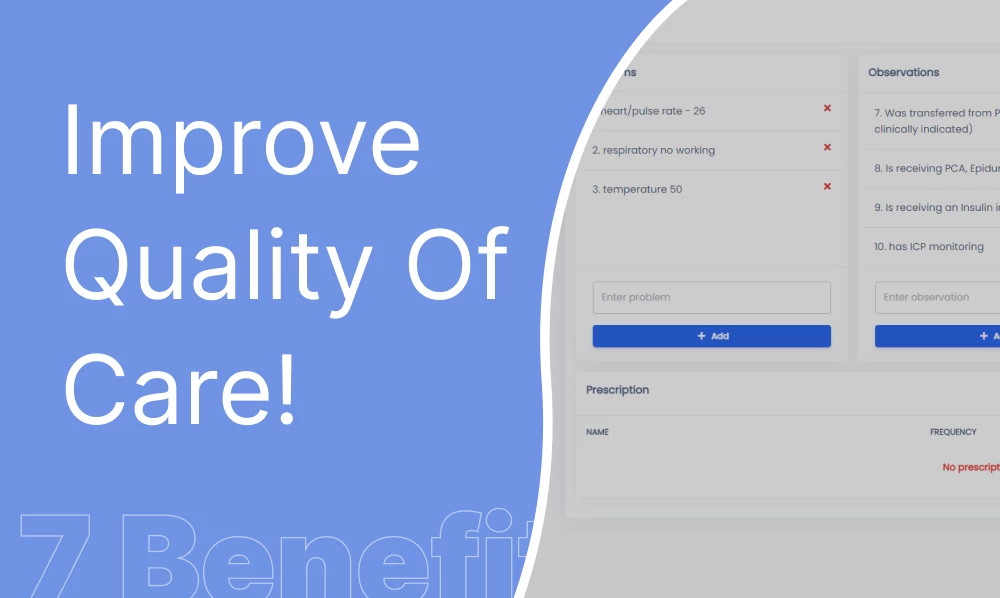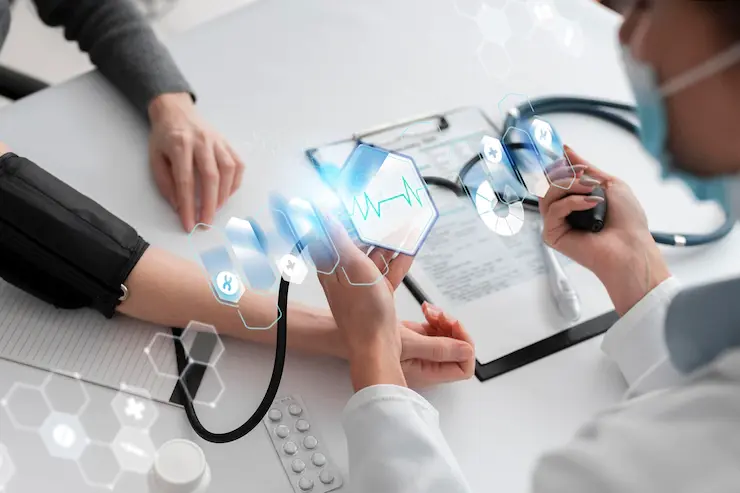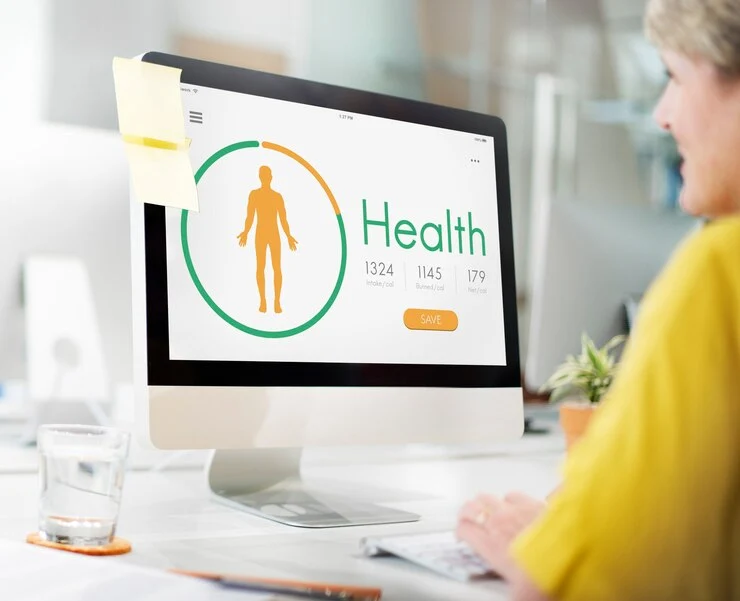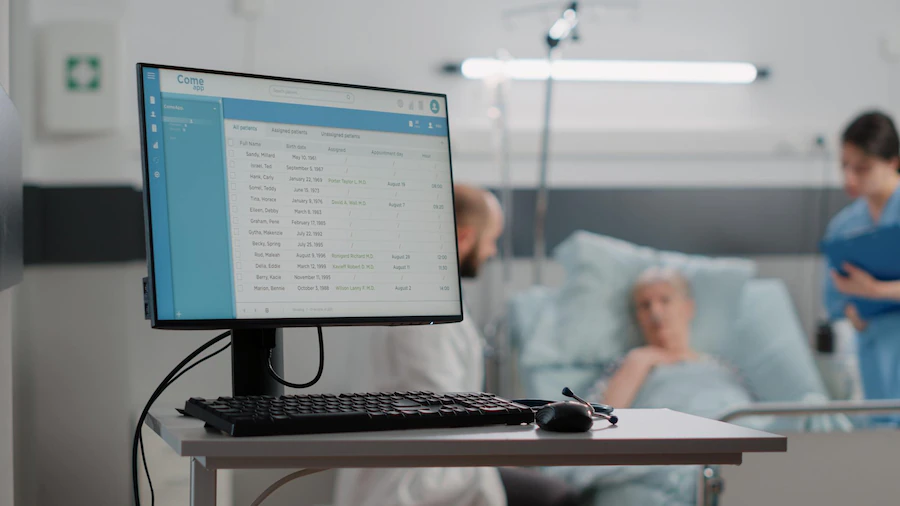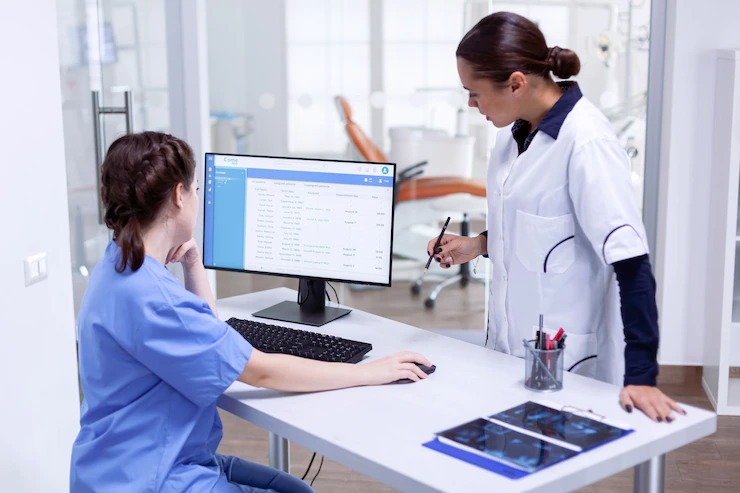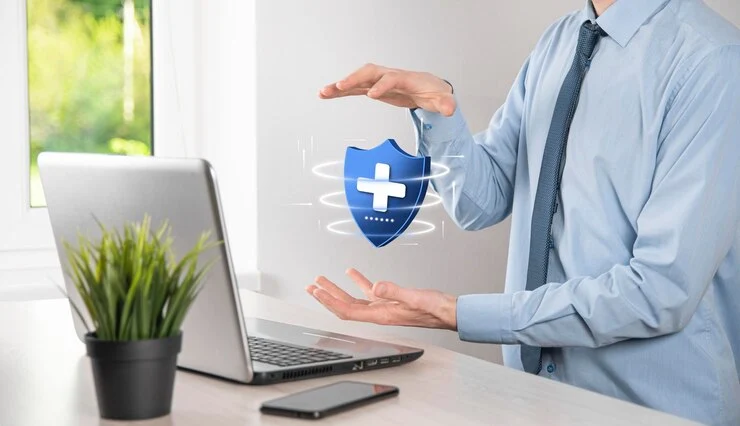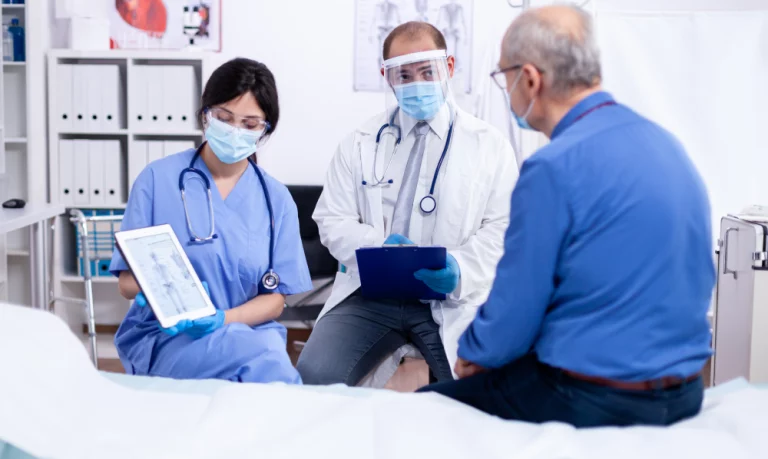EHRs, or Electronic Health Record systems, consistently improve medical care by providing valuable data to the healthcare professionals at their fingertips. They support maintaining the clinical data that eventually helps make better clinical decisions.
If these numbers don’t satisfy your thoughts. Then let us put your mind at ease with the numerous facts that help improve the patient’s care using an EHR.
In brief, EHRs contain a wide array of information regarding a patient’s medical history. For instance, their diagnoses, demographics, vital signs, problem lists, medications, and laboratory data.
They also assist the professionals in clinical decision support, health information exchange, patient support, electronic communication, orders and results in management administrative processes, and population health reporting are all examples of health information capture.
Now, let us explain the benefits of an EHR in-depth.
A doctor examines thousands of patients in a week, and you’ll probably have your next appointment after a week, right?
Guess the hassle when you can’t find your file while visiting the medical supervisor.
Well, thanks to EHR systems. They make your day easy by storing relevant information such as prescriptions, reports, graphs, and bills.
Also, a patient visits several doctors in the meantime. Starting from a dermatologist to a cardiologist. There’s a slight chance that each doctor is not as well acquainted with your reports as others. This may create a discrepancy between you and your respective supervisors.
Medical practitioners can now easily observe their patients’ data and their values, such as weight, blood pressure level, cholesterol level, and much more.
Applications or tools like EHR can help patients get extra attention in their care.
They can actively participate in the conversation and get better consultation by clearing their doubts and receiving a better explanation.
Often we do not even know about the disease in detail, and we still go for the treatments and tests without consideration.
EHRs give patients access to their most recent medical information, allow them to view notes or prescription results in almost real-time, and even communicate with their doctors through a secure system.
Including patients in the decision-making process gives them greater control over their treatment when you provide them access to their medical information. This might also help them comprehend your conclusions.
Once the medical professionals receive the information in a comprehensive manner, they can contemplate it and come up with an efficient solution quickly. EHR can boost this process by accessing and analyzing patients’ medical records tabulate the key points in order.
Today, EHR is so technologically advanced with the help of a patient’s relevant record set. Additionally, they can let doctors know if a new prescription is contraindicated due to the patient’s conditions, previous drugs, or health requirements. Policies also apply to care teams.
It also gets easier for doctors to share information with other medical professionals. Also, clinical staff can perform their duties with real-time updated data.
At any cost, no patient would accept the loss of their record. It is necessary for providers to ensure the security aspect.
The use of medical software by a practice may be rewarded or penalized. Therefore, EHR certifications are crucial for Medicare and Medicaid reimbursement reimbursements.
A patient may be working with multiple doctors at once, depending on the circumstances and demands of their diagnosis. X-rays or blood tests, for example, might have been requested separately from each provider in the past, and the patient might have been required to have them performed several times.
That causes problems for the patient and more medical expenses for the same surgery. With an EHR system, all healthcare professionals are familiar with the patient’s problems. They may anticipate that the patient will only receive the prescription or therapy once, resulting in a single bill.
Various healthcare professionals work in sync with each other. Doctors, attendants, technicians, and others work together to meet the patient’s requirements.
As all your data records are present in one place, it gets easier for everyone to better analyze the situation. Come up with a solution real quick and take immediate action.

